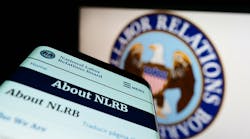Every warehouse manager has likely heard “What gets measured gets done.” Measuring and monitoring operations are key to managing an efficient, productive facility. Therefore, developing and implementing an employee performance expectations program shouldn’t be taken lightly.
Many warehouse managers approach labor standards development with an assembly line mentality. They often expect every task or warehouse function to be repeated the same way, each and every time. Basically Pareto’s Law, the 20/80 rule, does not fit into such a simple formula.
While a labor management system (LMS) is an important component in developing good performance standards, you must first measure employee performance.
Three Approaches
➤ Create a macro standard using historical records. Those might include the number of locations visited, the number of cartons created, and the number of units picked to fill the average order. With that information, the system determines the average number of picks per hour or shift per employee. The LMS then determines how many operators will be needed to pick orders on the next shift.
➤ Create master standards data using published standards. In this approach, every task is comprised of discrete movements, such as picking up a product and putting it on a pallet. Over the years, industry has compiled accepted standards for how long all of those should take. The sum of those movements makes up the basis for master standards data.
➤ Create discrete or engineered labor standards. An engineered labor standard breaks down each process into its component parts. Through time/motion studies and work sampling, an industrial engineer determines how long on average it takes workers to complete each component of the task safely with a built-in personnel fatigue and delay factor (PF&D).
Common Mistakes
It is impossible to create accurate expectations by making performance fit predetermined standards without considering the variables and their combinations. For example, in a grocery warehouse 125 cases per hour as a picking standard does not take into consideration whether it is in the dry, refrigerated or frozen storage areas. Or for that matter whether it’s a full pallet pick or a mixed “rainbow” pallet pick. Expectations must be based on an apples-to-apples comparison in the warehouse.
Another mistake many managers make is using averages to create expectations. An average is merely a statistical aberration that does not occur in the real world. Using averages often means lowering standards, because just a few poor or high performers can skew the results.
Some managers mistakenly believe that if every employee is surpassing the standards, it is a sign that the facility is operating at high productivity. It’s actually an indication that they need to re-evaluate their expectations and the standard.
Finally, remember that productivity comprises two areas: efficiency and effectiveness. Efficiency is doing things with the least wasted effort, while effectiveness is doing the right things or doing the things that yield results. You can’t measure productivity without looking at both.
The Right Expectations
“Which should I work on first: efficiency or effectiveness?”
In theory and practice, the best answer is to improve your effectiveness first. It’s much better to aim at the result than to worry about the process. Too often we get bogged down in the means and lose sight of the end.
Take these steps to develop performance standards and expectations:
➤ Determine if you can measure the task throughout the facility. If you can’t, you should not be using it as a performance standard. Unit load degradation is a good indicator that you cannot measure a specific task throughout the warehouse. For example, if you receive inventory by pallet, store it by case, but ship it by piece, the product has to be handled in three different ways in the facility.
➤ Beware of technical or confusing expressions. Rather than terms like “cost ratios,” use more common physical terms such as lines, orders, SKUs, unit loads, etc. Also, avoid mixing different businesses, such as cases and broken case picks or LTL and FTL receipts. Once you measure actual performance against a standard, put it in a meaningful way.
➤ Perform a standards study. You should clearly communicate the purpose and methods of the study to all employees. Implementing performance standards and expectations without explaining the reasons for the change can create unnecessary tension and anxiety among those who are going to be affected. If possible, allow employees to be involved in the process, including work sampling and measuring.
➤ If your workforce is unionized, you should also explain your plans to the union. To be successful, you need the support of everyone involved.
➤ Seek employee involvement and gain their support. Whether union or non-union, advise employees of the reasons for the program, and describe what, when, and how this will be accomplished. Ask for their input. Discuss the results with employees, as well as first line supervisors and verify the findings. Did your measurements represent normal and typical activities? A performance measurement program depends on accurate expectations. Using abnormal conditions to create a baseline for expectations will undermine the entire effort.
➤ Create a range of performance expectations, not a single threshold. Every employee is different, and expecting identical performance from each is unreasonable. This only discourages those employees who can’t reach the standards, while encouraging the best performers to underachieve.
Also, employees are more likely to support and buy into the performance expectations if they understand that there is a range of acceptable performance.
➤ Set up and monitor a pilot program. Are your expectations reasonable? If not, a pilot program should quickly identify any errors in your original conclusions. It is much better to discover the problem on a small scale before you implement the expectations across the entire warehouse.
➤ Provide constant, positive feedback. Most employees will not meet the new performance expectations overnight. Look for incremental improvements, and reward good performance. Remember, people soon forget about monetary rewards—do not undervalue praise and recognition. It costs little, but has a much more lasting effect.
➤ Develop a method to monitor employee performance graphically, instead of in spreadsheet tables. This way, you can actually see trends and resolve issues before they become real problems.
➤ Communicate results of the team, not the individual. Posting individual results can have a negative impact. The workers on the floor can tell you who the most productive employees are and who the least productive are without looking at posted results. It only causes dissension and resentment among coworkers. A small group, through productivity gainsharing has a better chance of achieving success as a whole than an individual does. Only communicate individual results in private meetings or communications.
➤ Deal with employees who fail to meet expectations.These employees come in two types: those who can’t and those who won’t. In either case, you must identify which type an employee is and find a way to help him or her reach the expected level. Employees who can’t meet expectations can usually be coached. Try to achieve improvements incrementally. People who won’t meet the expectations need to be counseled. Don’t ask what they dislike; ask them why they dislike it. This will eliminate their opportunity to merely gripe and force them to discuss exactly what it is about the standards that they find unreasonable. Listen to their arguments—they may have valid points.
➤ Use performance management appraisal and development. Performance reviews help supervisors feel more honest in their relationships with their subordinates and feel better about themselves in their supervisory roles.
Subordinates are assured clear understanding of what’s expected from them, their own personal strengths and areas for development, and a solid sense of their relationship with their supervisor.
Avoiding performance issues ultimately decreases morale, decreases management credibility, decreases the organization’s overall effectiveness and wastes more of management’s time to do what isn’t being done properly.
To measure your people effectively, identify metrics that are appropriate for your organization and that will improve the warehouse’s performance.
Tom Tanel is president and CEO of CATTAN Services Group Inc. (www.cattan.com), a logistics advisory, counseling, and training firm in College Station, Texas. He can be reached at [email protected] or 979-212-8200.
Related Editorial:
Bottom Line Results Start on the Shop Floor
Cross-training Empowers General Cable’s Team
Technology does not correct stupid




